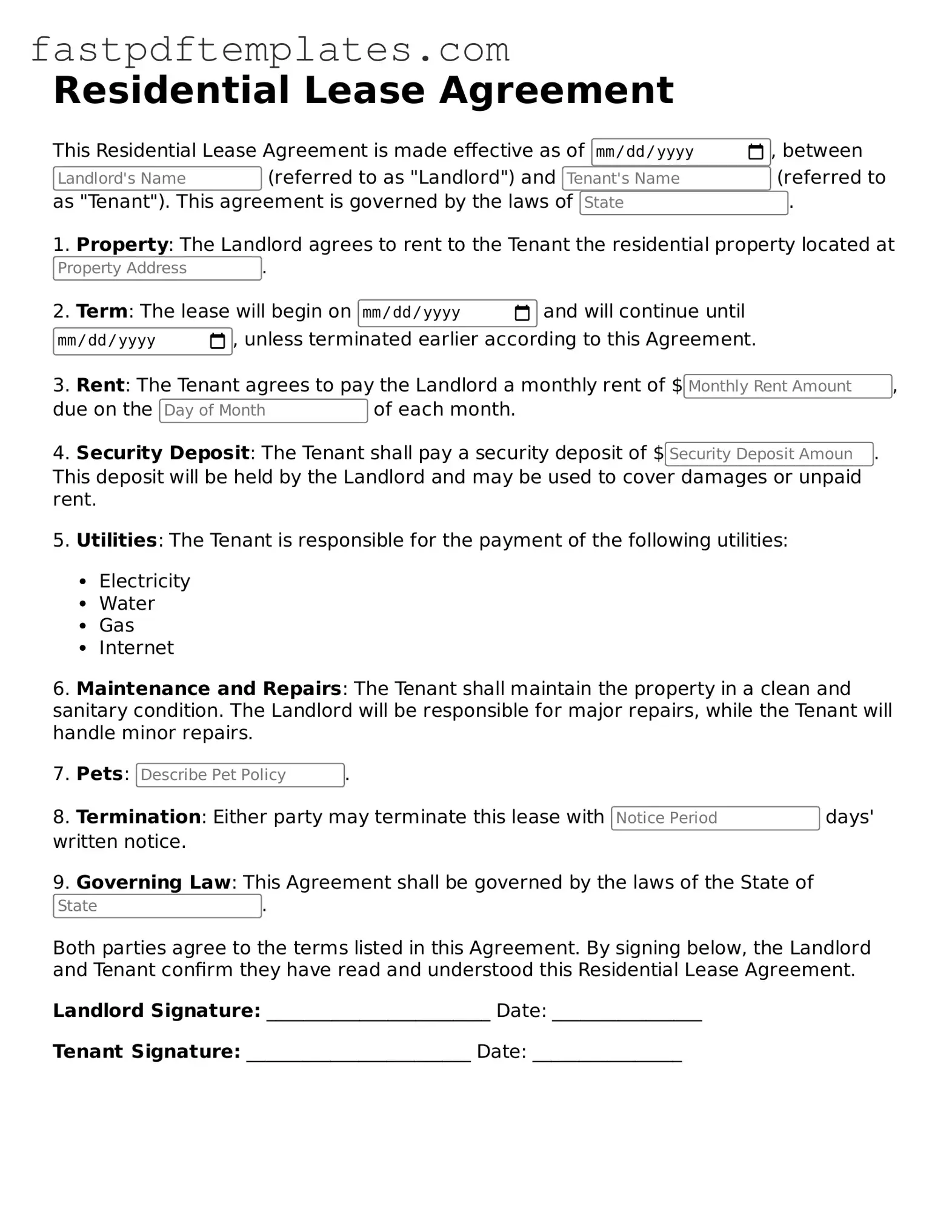The Residential Lease Agreement is similar to a Rental Agreement. Both documents outline the terms under which a tenant can occupy a property. They specify the duration of the tenancy, the rental amount, and the responsibilities of both the landlord and tenant. However, a Rental Agreement is typically used for shorter-term arrangements, often month-to-month, while a Residential Lease Agreement usually covers a longer period, often a year or more.
A Commercial Lease Agreement shares similarities with a Residential Lease Agreement in that it governs the rental of a property. Both documents detail the terms of occupancy, including rent, maintenance responsibilities, and lease duration. The key difference lies in the type of property being leased; a Commercial Lease pertains to business premises, while a Residential Lease is for living accommodations.
A Sublease Agreement is another document that resembles a Residential Lease Agreement. It allows a tenant to rent out their leased property to another person. Like a Residential Lease, it outlines terms such as rent and duration. However, the original tenant remains responsible to the landlord, whereas the subtenant has a direct relationship with the original tenant.
A Lease Option Agreement is also similar. This document provides a tenant the option to purchase the property at a later date. It includes terms regarding the lease duration and purchase price, resembling a Residential Lease Agreement in structure but adding the unique aspect of a potential future sale.
A Room Rental Agreement is akin to a Residential Lease Agreement but is tailored for situations where a tenant rents a room in a shared living space. It specifies the rights and responsibilities of the tenant regarding common areas, utilities, and rent, much like a Residential Lease Agreement does for an entire unit.
A Lease Purchase Agreement combines elements of a lease and a purchase agreement. It allows tenants to lease a property with the intent to buy it later. This document outlines the rental terms similar to a Residential Lease Agreement but includes provisions for the eventual purchase of the property.
A Tenancy Agreement is similar in that it establishes the relationship between a landlord and tenant. It includes terms regarding rent, duration, and responsibilities. The primary distinction is that a Tenancy Agreement can be used for both residential and commercial properties, making it broader in scope compared to a Residential Lease Agreement.
A Month-to-Month Lease Agreement is closely related to a Residential Lease Agreement. It allows for flexibility in tenancy, with no fixed term. While it still outlines rent and responsibilities, it typically requires shorter notice periods for termination, making it more adaptable than a standard Residential Lease Agreement.
A Lease Renewal Agreement is similar in that it extends the terms of an existing Residential Lease Agreement. This document outlines the continuation of the lease, often with updated terms or rental rates. It ensures that both parties agree to continue the tenancy under specified conditions.
Finally, a Property Management Agreement is akin to a Residential Lease Agreement in that it governs the relationship between a property owner and a management company. It details the responsibilities of the management company in handling tenant relations and property maintenance, similar to how a Residential Lease Agreement outlines the responsibilities of landlords and tenants.
